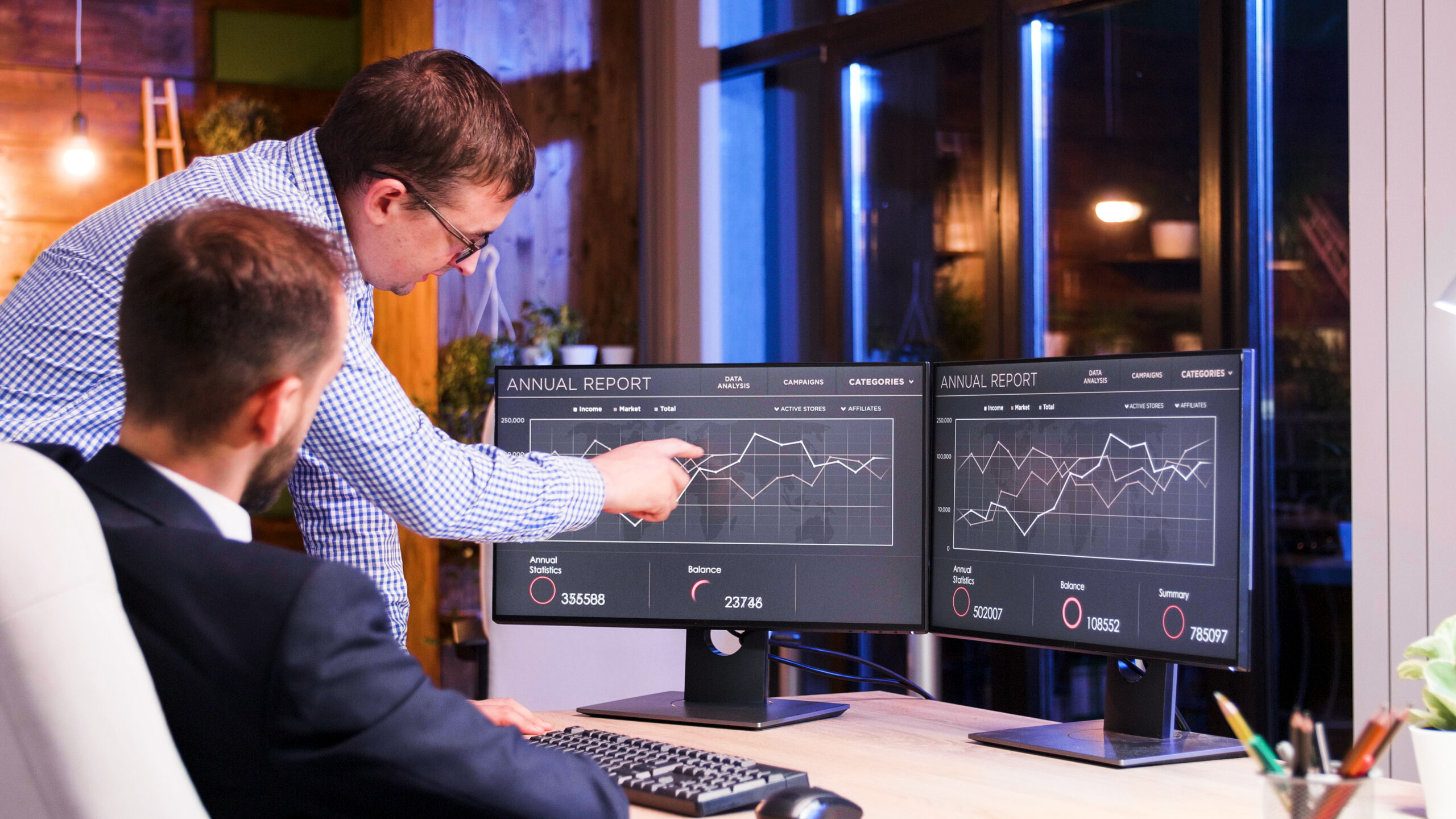An IT asset management system is a software-based system that helps organizations keep track of their valuable IT assets like computers, printers, and software licenses. It allows tracking of support from when they are bought until when they are disposed of.
Some key things an IT asset management system does include:
● IT inventory tracking maintains a complete inventory of all IT assets in your organization, along with details like purchase date, location, warranty, etc.
● Asset lifecycle management – It helps manage assets at all stages, from planning to procurement to deployment, maintenance and retirement.
● Software license management ensures you comply with all your software licenses by tracking installed vs purchased licenses.
● Reporting and Analytics – It provides powerful reports on asset usage, warranties expiring and more to help with budget planning and decision-making.
● Multi-user access – The software allows different teams like IT Finance to access the same asset data they need from their role.
Understanding IT Assets
Now that we have understood what an IT asset management system is, let’s dive deeper into the assets themselves that such approaches help manage. As you know, IT assets come in two main types – hardware assets and software assets.
Hardware Assets
Hardware assets refer to the physical computing devices and equipment that form the backbone of technology in any organization. Some of the most common hardware assets include desktop computers, laptops, servers, networking gear like switches and routers, printers, and other peripherals. Proper tracking of these physical assets is important from an inventory and maintenance perspective. With new devices being added and old ones being retired daily, keeping accurate hardware records is no small challenge.
Software Assets
While hardware is tangible, software assets may be a less familiar concept to some. In essence, any application or codebase that requires a license to use legally constitutes a software asset. Typically, the most common types are commercial off-the-shelf applications like MS Office, database programs, and customized enterprise software. Software assets include operating systems, antivirus solutions, and SaaS/Cloud platforms. A key aspect of software asset management involves ensuring compliance with license terms by closely monitoring installation and usage patterns across the organization.
Other Asset Types
Some other niche but important asset types that modern IT asset management systems support include digital assets, cloud assets, and services/subscriptions. Digital assets can refer to multimedia files, digital documents, and software licenses stored electronically. Cloud assets map to any IT infrastructure or services consumed via a cloud vendor. Meanwhile, services or subscriptions cover ongoing paid support contracts and online services.
This overview of common IT asset categories shows how a centralized software solution becomes invaluable for their lifecycle control and optimization. Up next, we will explore the typical stages involved.
The Asset Lifecycle Process

Now that we understand the different types of assets that an IT asset management system can track let’s discuss the typical stages involved in managing assets over their lifetime within an organization. Proper handling at each step of the asset lifecycle is important to maximize return on investment.
Planning
The first stage involves assessing your IT needs and determining what assets need to be procured. Careful upfront planning considering cost, reliability and maintenance requirements can ensure the right investments are acquired.
Procurement
With planning done, this stage covers the purchase or acquisition of the new assets. Procurement involves vendor selection, negotiating contracts, and purchase order management.
Deployment
Once received, assets need to be deployed for use. It may include installation, configuration, adding security controls, and integration with other systems before rolling out to end users.
Maintenance
All assets require regular upkeep to perform optimally. This stage involves routine checks, software updates and repairs. Preventative maintenance can prolong the useful lifespan of devices.
Retirement
As assets age and newer options emerge, there comes a time when maintenance no longer makes business sense. The retirement stage deals with removing access, archiving data, and disposing of retired assets.
By establishing clear processes for each stage and tracking assets using the right software, organizations can streamline the asset lifecycle for better visibility and cost control.
Implementing an ITAM Solution
Now that we understand the need and importance of managing the IT asset lifecycle effectively let’s dive into how organizations can implement an IT asset management system to do so.
● Evaluating Options: The first step is assessing your unique ITAM needs and shortlisting potential software options based on cost, features, and support. Remember to check integrations with other systems already in use.
● Setup and Configuration: Once purchased, ITAM solutions require proper setup, which involves loading your existing asset inventory, customizing fields and workflows, and configuring permissions for different user roles. Integration with procurement and financial systems also needs testing.
● Discovery and Scanning: Discovery tools scan your network and automatically detect devices to get a complete picture of assets. Regular scans ensure records stay accurate as new widgets are added or old ones removed without manual updates.
● Defining Processes and Forms: With your system ready, take time to define standardized processes like procurement requests clearly, moves/adds/changes and retirement. Customizable forms support these workflows.
● User Adoption and Training: User adoption is key to success. Provide training and support to teams on basic navigation and specific role-based tasks like approvals, reporting, etc.
● Ongoing Maintenance: As with assets, the ITAM solution also requires maintenance. It involves upgrades, backups, adding newly approved devices to the catalogue and overall optimization over time.
With the right implementation approach, ITAM software transforms asset management capabilities.
Ongoing Asset Management
Now that an IT asset management system is running, the real work begins – ongoing asset tracking and optimization over their lifecycles. Let’s explore key continuous processes that ensure maximum value from your ITAM solution.
● Routine Asset Tracking: Regular inventory scans and manual updates ensure asset records remain accurate as devices are moved, upgraded or removed from service. Customizable checklists help track conditions and perform preventative maintenance.
● Software License Management: A core function reconciles installed vs. purchased software licenses to avoid compliance issues. Automatic metering integrates with usage data for a real-time view of optimization opportunities.
● Contract and Warranty Monitoring: Critical service contracts and warranties are closely monitored so renewals don’t lapse. Expiry alerts prevent unexpected costs and downtime from uncovered repairs.
● Budget Planning and Forecasting: Powerful reporting gives leadership visibility into existing assets, future needs and total cost of ownership. Forecasts support long-term financial planning and replacement schedules.

● Asset Utilization Analysis: Usage data and metrics reveal which assets could be under-utilized and candidates for reassignment, consolidation or retirement to reduce expenses.
● Security and Configuration Management: Configuration baselines ensure asset security patches and settings remain up-to-date for vulnerabilities. Custom workflows support change management.
With continuous asset tracking, organizations maximize their IT investments through optimized procurement, support cost control and demand-driven technology decisions.
Maximizing Value from your ITAM System
You now understand an IT asset management system, how it supports the asset lifecycle, and how to implement one for your organization. But what are the tangible benefits? Let’s explore how ITAM solutions help maximize value.
● Increased Visibility & Control: Comprehensive asset tracking provides a single source of truth, eliminating manual errors and redundant efforts. Powerful reporting gives leadership full visibility into their inventory.
● Compliance & Security Assurance: Automated license reconciliation and configuration baselines ensure software compliance and security best practices are followed consistently across all devices.
● Higher Operational Efficiency: Streamlined processes for procurement, onboarding, moves/changes/adds save significant time and effort versus disjointed manual efforts. Resources are freed up.
● Optimized Cost Management: Deeper insights into spending, utilization, and maintenance needs support data-backed decisions to reduce expenses through consolidation, upgrades or outsourcing.
● Improved User Experience: Self-service portals and ticket systems empower users to easily request services, track requests, and get issues resolved faster through the approved channels.
● Enhanced Decision Making: Usage analytics and forecasting equip leadership with accurate data to determine refresh cycles, justify budgets, and evaluate emerging technologies – reducing risk in strategic decisions.
With the right ITAM system, companies unlock tremendous value through informed planning and optimized support of their IT infrastructure spend. Does your organization benefit from such a solution?
Conclusion
An ITAM system provides inventory tracking, license management, and analytics to give your entire infrastructure visibility.
It helps streamline processes across stages like procurement, deployment, maintenance and disposal through automated workflows.
With accurate asset data, organizations can optimize costs, ensure security and compliance, and make informed technology decisions through powerful reporting and forecasts.
Regular asset tracking and maintenance are important for maximizing the value of assets and minimizing security risks over time.
The right ITAM implementation supported by experienced professionals delivers tangible benefits like reduced expenses, higher efficiency and data-backed decision-making.
Frequently Asked Questions
How do I get started with an ITAM project?
The first step is assessing your needs by cataloguing assets and processes. This informs an RFP to shortlist quality ITAM solutions. Start small by onboarding key assets and training core teams before rolling out enterprise-wide. Pay attention to change management – clearly define workflows and gain leadership buy-in. Most importantly, assign project owners accountable for milestones to ensure success.
What are the costs involved?
ITAM software pricing varies based on user count and desired features, starting from a few hundred dollars. Consider potential ROI from improved visibility, compliance and optimization identified during your needs assessment. Implementation typically ranges from $5,000 to $15,000, depending on the customization and integrations required. Ongoing costs include annual software maintenance and support subscriptions.
How can ITAM help ensure compliance?
By automatically reconciling purchased vs. installed licenses, ITAM solutions flag any compliance gaps to address proactively. Powerful reports provide auditable records for software audits. Contract details are centrally monitored to avoid expirations and gaps in coverage. Change management workflows ensure changes to devices don’t jeopardize security baselines. Overall, ITAM automates previously manual efforts to simplify compliance.
What skills are required for an ITAM role?
Key skills include inventory management, asset lifecycle expertise, software license knowledge, and technical proficiency in operating the ITAM system. Project management abilities are invaluable for implementation. Communication and stakeholder management skills are important to drive user adoption. While optional, certifications like ITIL or coursework in related fields provide a solid foundation to succeed in this multi-disciplinary role.
How frequently should assets be inventoried?
Performing a full physical inventory annually and incremental scans quarterly to monthly, depending on your environment’s scale and churn rate, is recommended. New or high-risk assets may require more frequent validation. The goal is to maintain records accurate to within 5% of actuals. Beyond compliance needs, more frequent scanning supports timely software license optimization, security patching and asset maintenance to maximize uptime and ROI.



